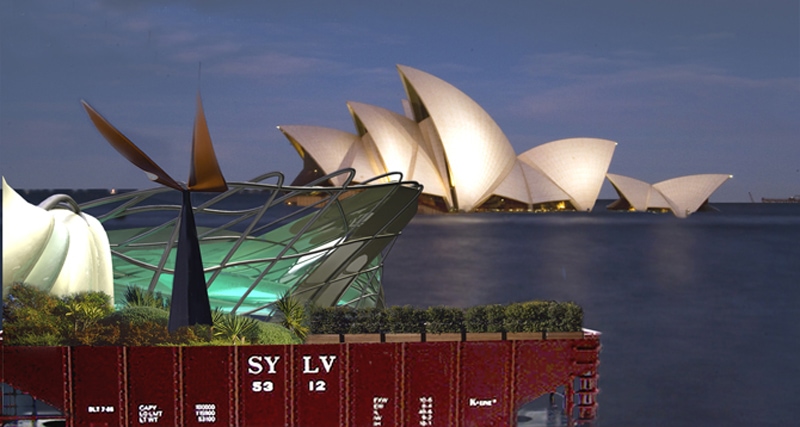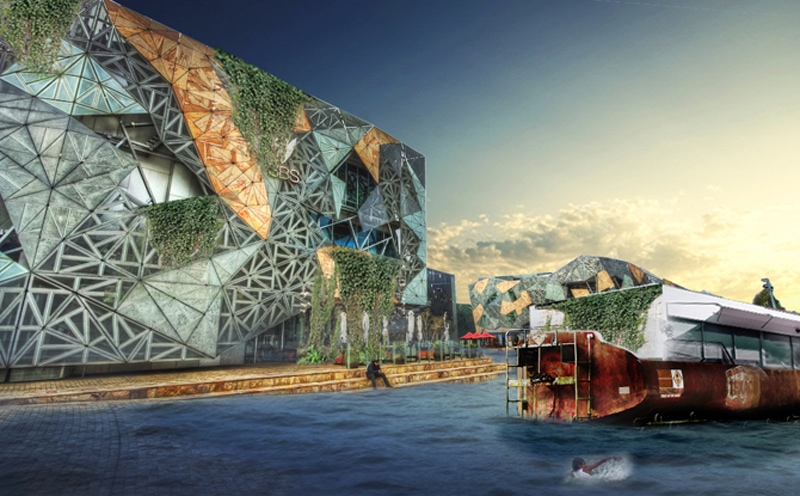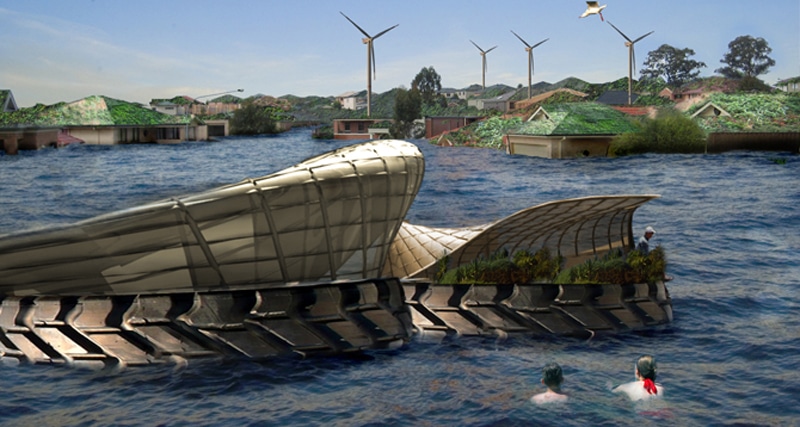






Design of a Future Australian City
By 2050 71% of the world’s surface is going to be covered by water. The rise in sea levels will have altered coastal cities’ geography.
The world’s first living organisms originated in the sea; humanity has to learn to regain its amphibious ancestral baggage.
If amphibious Venice could become a super power of the 16th and 17th Century then modern technology and resources can offer the re-born seashore cities the means to transform themselves into flourishing water cities.
The fluidity of the element is a liberating factor; it frees the burden on the cities of private property and its tenures. The water would be open to the public, unable to be privatised, allowing access and movement of dwellings in the new public space.
New water levels create superfluous land infrastructures; such as train carriages, road tankers, coal mine excavators, which could be transformed into floating dwellings, gardens and workplaces.
The amphibious city will be highly mobile; the dwellings will converge towards the work places or the schools. The change of workplace and school will be as easy as a boat ride. The mobility will provide a greater level of freedom and social exchanges. The population will be harder to manipulate and control.
The water city will be self reliant on power and water generation; sun, waves and wind will allow the mobility of the new dwellings.

© Luigi Rosselli Architects

© Luigi Rosselli Architects